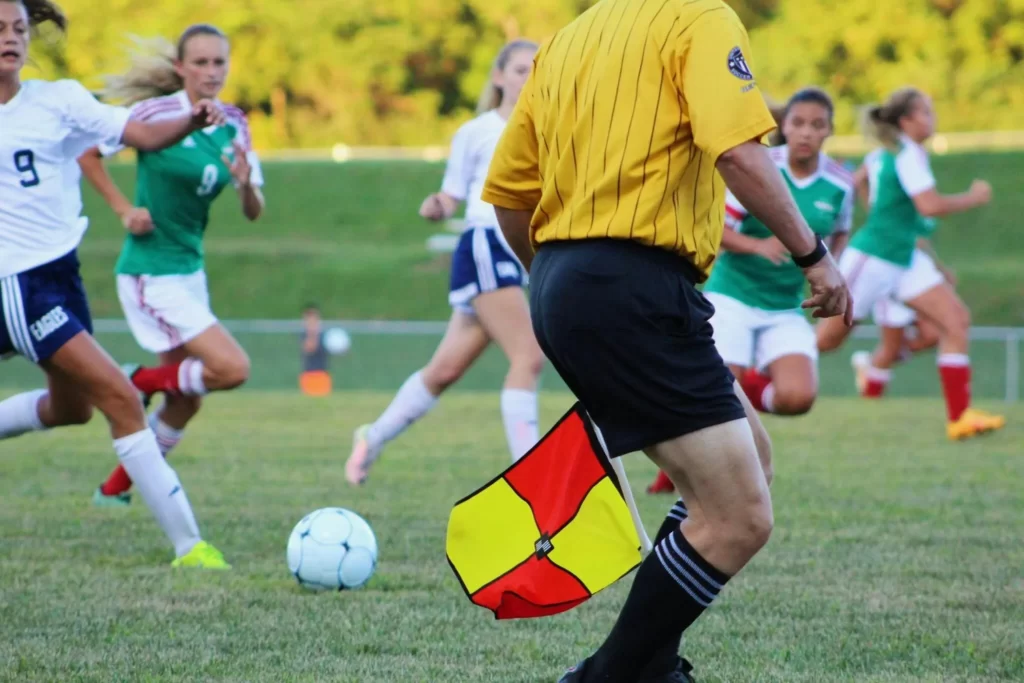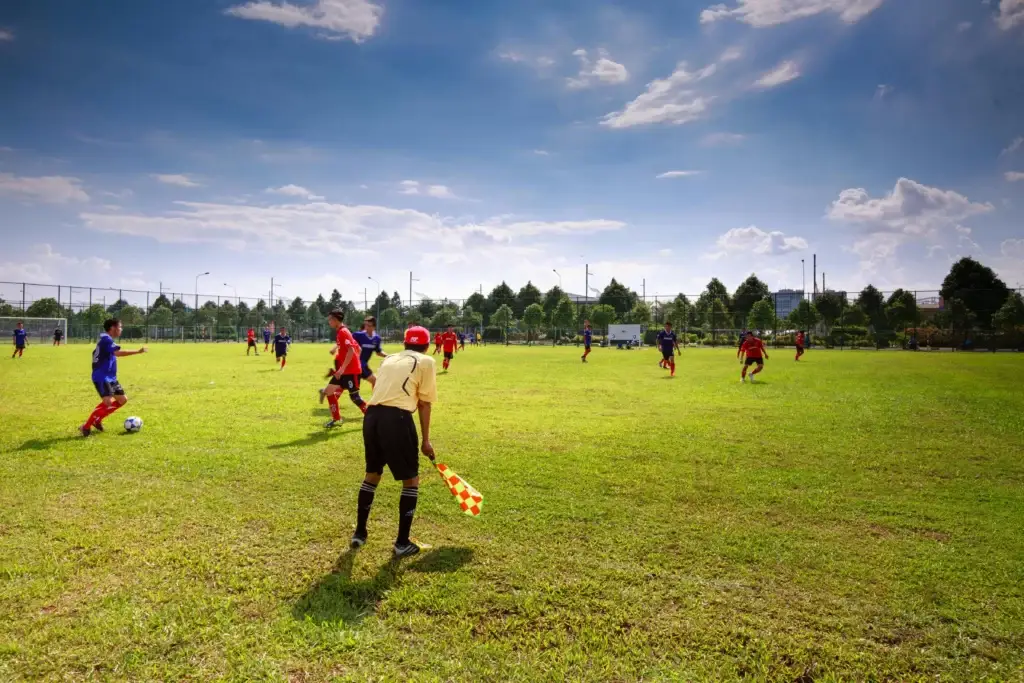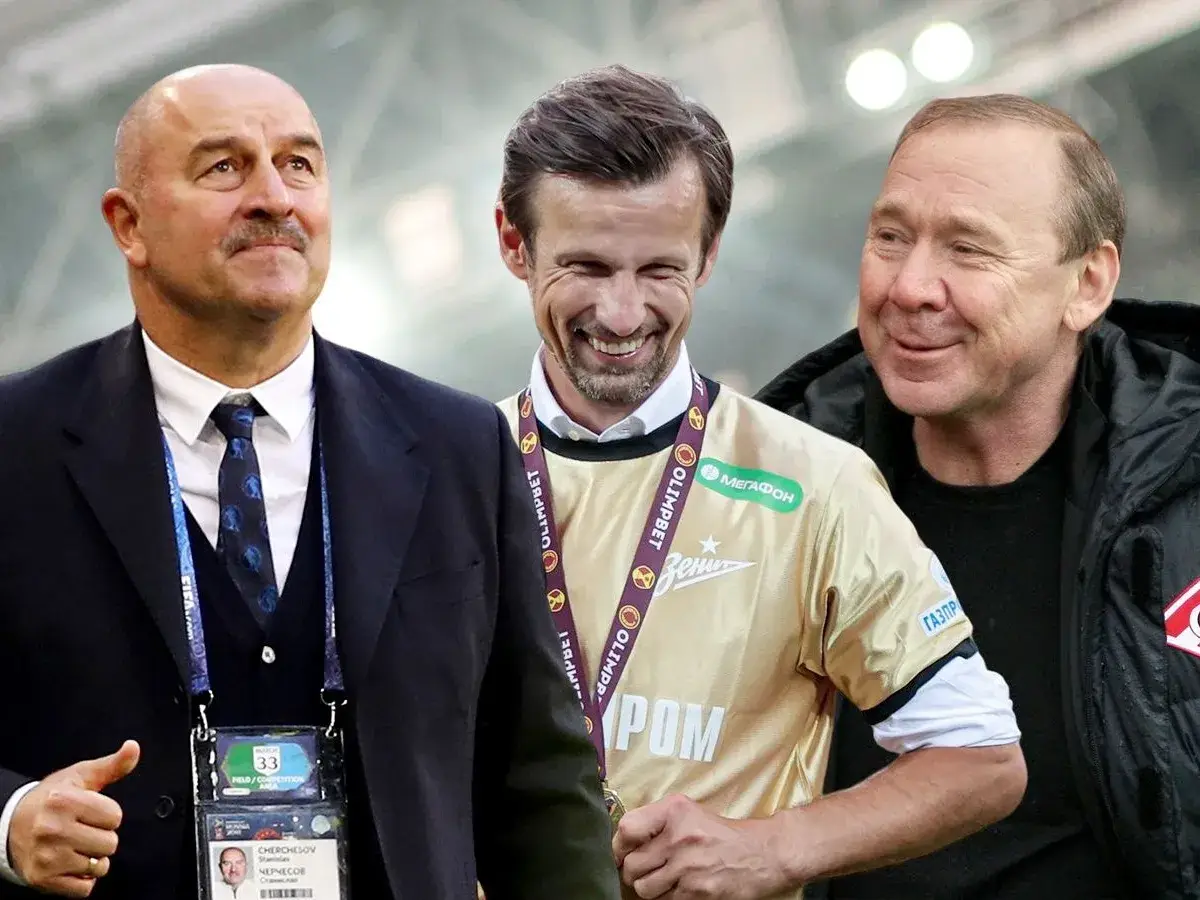Football is a passion that unites millions of people around the world. The rules of a football match may seem simple at first glance, but the essence of the game is hidden in the nuances. The more you know about the set standards, the more you understand why a game can become a real spectacle. Everyone has heard the referee shout, watched the goalkeeper make a crazy dive or seen the offside light go on. Let’s dive into these details to make football more than just a race for the ball.
The basics of the game: How the football pitch and the team are organised
The football pitch is the stage on which the drama plays out. The pitch has clear dimensions: It is between 100 and 110 metres long and between 64 and 75 metres wide. The exciting battles between the teams take place on these square metres. In the centre is the kick-off circle and each team has a goal, which is defended by a goalkeeper. The size of the goal is strictly regulated – 7.32 metres wide and 2.44 metres high.

A team consists of eleven players, each of whom plays an important role:
- Goalkeeper: the last bastion of the defence. His job is to keep the ball out of the goal with his hands inside the penalty area.
- Defenders: like fortress walls, they block the path of the opposing attackers and prevent them from getting into attacking positions.
- Midfielders: They are the link between defence and attack, often initiating attacks and setting the rhythm of the game. They are the ones who receive the most passes.
- Strikers: The ones who want to score goals and make the most of every opportunity. Their results are often decisive for the game and remain in the memory of the spectators.
Important areas on the pitch
There are several important areas on a football pitch:
- Penalty area: the area in front of the goal, which is 16.5 metres long and 40.3 metres wide. Care and precision are particularly important here, as any offence can lead to a penalty.
- Corner area: The radius of the corner area is 1 metre. This area is used for corner kicks when the ball is played over the goal line by a player of the defending team.
- Central area of the pitch: The circle in the centre of the pitch has a radius of 9.15 metres. This area is used for the first draw and to restart play after a goal.
The corner area of the pitch is also very important. If the ball leaves the field of play behind the goal line by a player of the defending team, the opponent has the right to a corner kick. Corner kicks are attacking opportunities and often decisive goals are scored after this type of play. The central area of the pitch is important for the initial moves and strategic movements, as this is where the main distribution of attacking actions takes place.
The team on the pitch: who is responsible for what?
The rules of a football match stipulate that there must be eleven players from each team on the pitch, each of whom has a different task:
The goalkeeper is the only one allowed to touch the ball with his hands, but only within his own penalty area.
The defenders work at the back of the pitch and their main task is to prevent the opponent from getting into an attacking position.
Midfielders are versatile fighters who can be deployed both in defence and attack. They control the rhythm of the game like conductors control the orchestra, and most passes go through them.
Strikers are keen to score goals and often become the heroes of matches, as their effective actions are remembered by spectators.
Football terms: How not to get confused about offside and penalties?
 Football is full of technical terms that can sometimes confuse even experienced fans. Let’s start with one of the most controversial terms – offside. What does it mean? It is a situation in which the striker is closer to the opponent’s goal than the ball and the penultimate defender at the time of the pass. This rule of football was invented to prevent strikers from being unfairly ‘hit’ near the goal.
Football is full of technical terms that can sometimes confuse even experienced fans. Let’s start with one of the most controversial terms – offside. What does it mean? It is a situation in which the striker is closer to the opponent’s goal than the ball and the penultimate defender at the time of the pass. This rule of football was invented to prevent strikers from being unfairly ‘hit’ near the goal.
Penalty and penalty kick: When does the referee blow the whistle?
A penalty kick is awarded for an offence outside the penalty area. There are two types of penalties: direct and indirect:
- With a direct penalty kick, the athlete may immediately shoot at goal and if the ball hits the goal, the goal counts.
- In an indirect penalty kick, the ball must first touch another player before it hits the goal. Penalty kicks are usually taken between 18 and 30 metres in front of the goal, which creates good attacking conditions. The referee indicates that it is an indirect penalty kick by raising his hand and holding it up until the ball touches another player or goes out of play.
The location of the penalty kick is determined according to where the offence was committed. A wall consisting of players from the defending team is placed 9.15 metres away from the ball to reduce the likelihood of a direct shot on goal. The execution requires great skill as you must either avoid the wall or find a gap between the players.
A penalty kick is the highest penalty for an offence inside the penalty area. It is taken from the penalty mark (11 metres in front of goal) and is one of the most dramatic moments in football when only the offending player and the goalkeeper remain on the pitch. The latter is obliged to remain on the goal line until the kick is taken, which makes the game even more difficult. The probability of scoring a penalty is 75-80%, but much depends on the psychology and technique of the player and the reaction of the goalkeeper.
Penalties are awarded for serious offences such as fouls, tripping, delaying an opponent or handball inside the penalty area. The outcome of the game is often decided in this phase, when nerves are on edge. There are many examples in history of teams winning or losing crucial games through penalty shoot-outs, such as the 2005 Champions League final between Liverpool and Milan, where a penalty shoot-out decided the championship title. In such situations, athletes and fans are in a state of incredible tension and every shot can be decisive.
Yellow and red cards: How the referee awards penalties
The referee is the main person responsible on the pitch for ensuring that the rules of a football match are adhered to. He hands out yellow cards for serious offences and unsportsmanlike behaviour in order to caution the player. If the offence is serious or the player receives a second yellow card, the referee shows a red card and the player must leave the pitch. This not only weakens the team, but often changes the entire course of the game. For example, the exclusion of the captain can demoralise the entire team, which the opponent is sure to exploit.

Rules for a football match: Conclusions
 Now that we have learnt the rules of a football match in detail, we can safely say that football is an art of tactics, skill and emotion. From understanding the offside to recognising the meaning of each card, it all helps you to experience every moment on the pitch more intensely. Try watching a game and find yourself already understanding why the referee has shown a yellow card or why an offside has been whistled.
Now that we have learnt the rules of a football match in detail, we can safely say that football is an art of tactics, skill and emotion. From understanding the offside to recognising the meaning of each card, it all helps you to experience every moment on the pitch more intensely. Try watching a game and find yourself already understanding why the referee has shown a yellow card or why an offside has been whistled.
 en
en  de
de  ar
ar  es
es  nl
nl  hi
hi  fr
fr  it
it  pt
pt  el
el 










